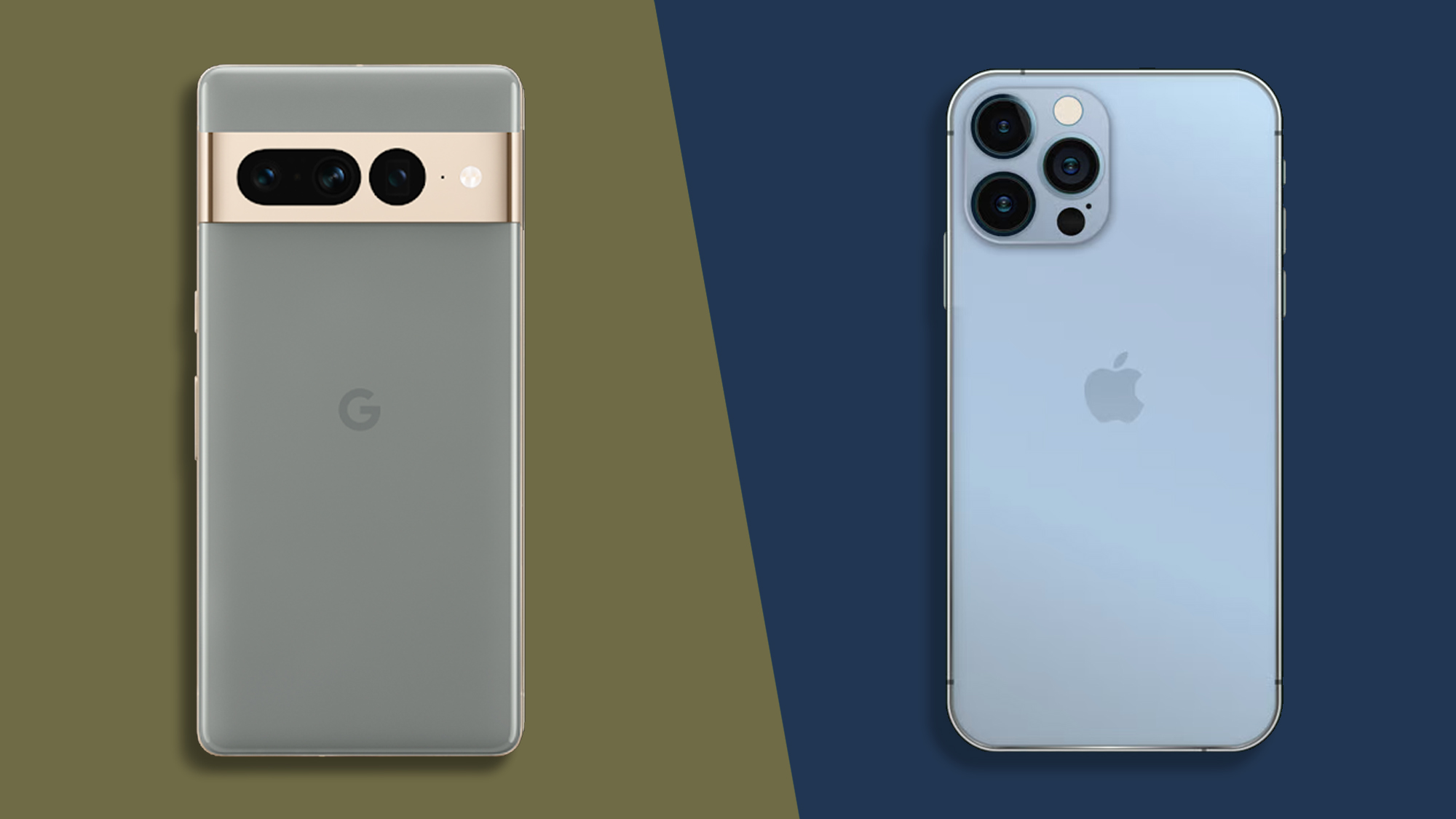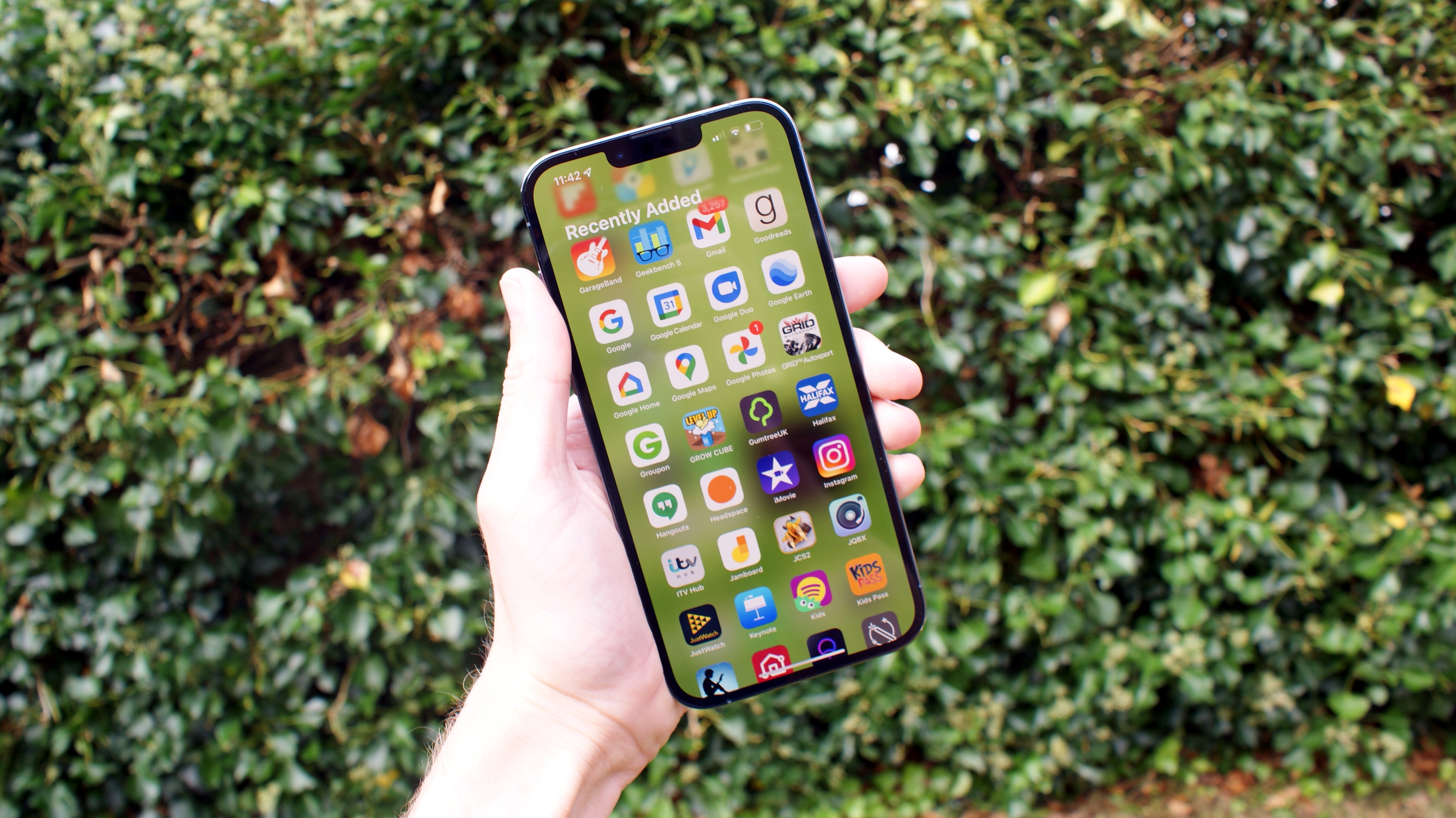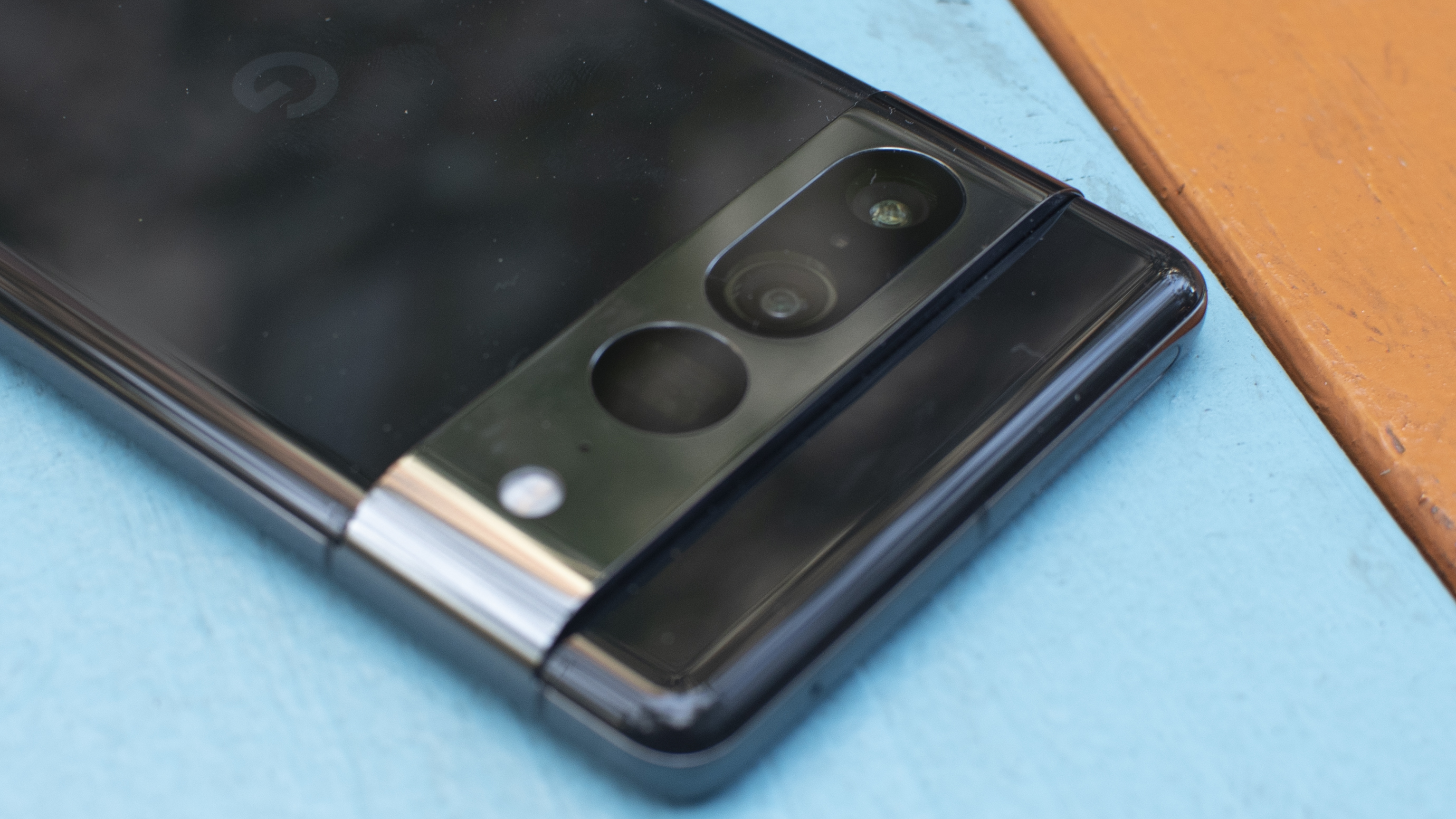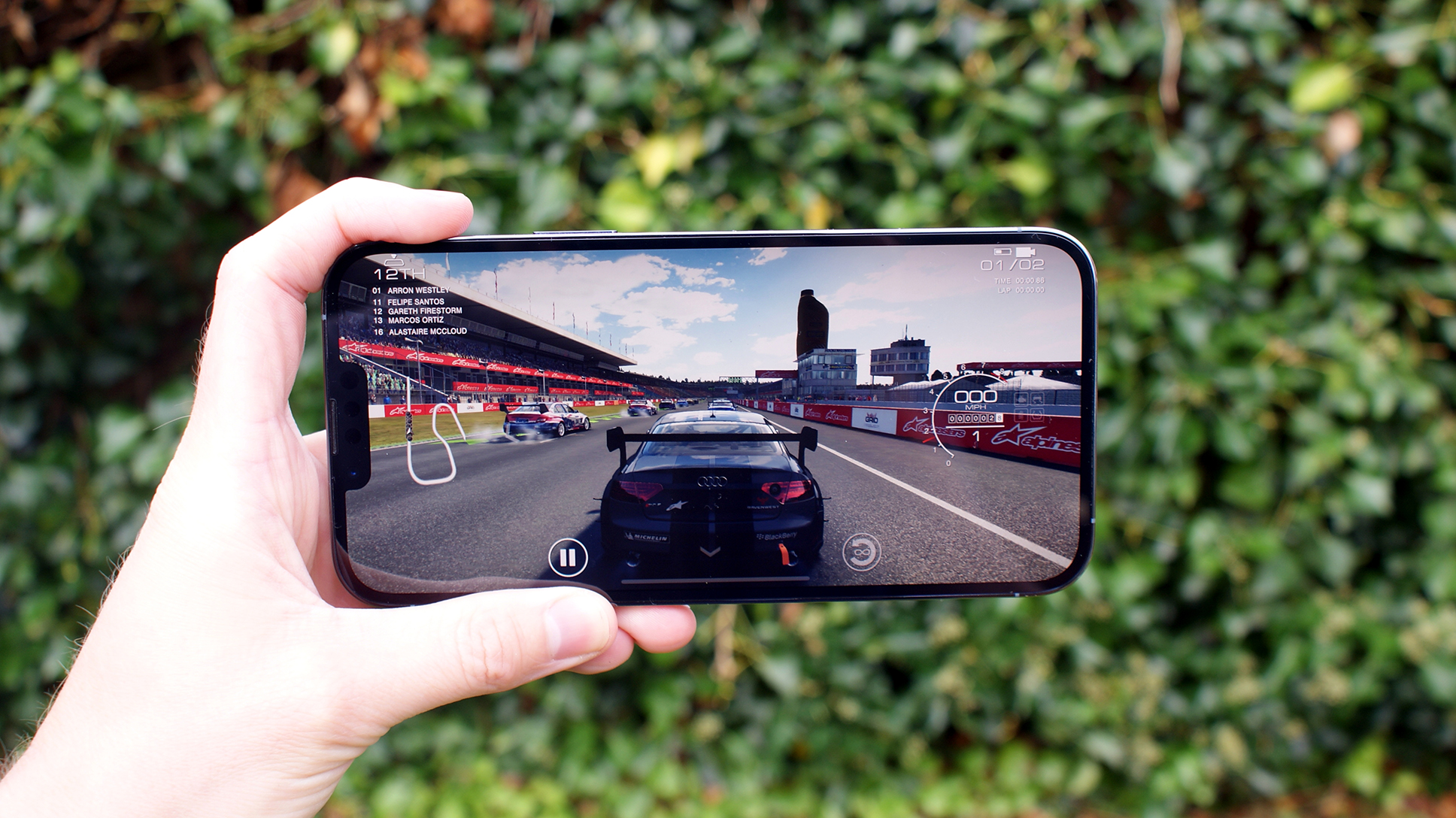
The Google Pixel 7 Pro has finally been unveiled, and we have a new premium flagship contender for 2022. But how does it compare to one of the very best top-level phones of 2021, the iPhone 13 Pro Max?
While you might think that the iPhone 14 Pro Max is the more natural rival as a close contemporary, it’s significantly more expensive than the Pixel 7 Pro. Could the iPhone 13 Pro Max be the better value choice?
What’s more, can Apple’s outgoing flagship phone stand up to the Pixel 7 Pro spec for spec?
Pixel 7 Pro vs iPhone 13 Pro Max price and availability

The Pixel 7 Pro hit the market on October 13, 2022. Prices start from $899 / £849 / AU$1,299 for the 128GB model, while you can also double your storage to 256GB for $999 / £949 / AU$1,449. In some markets there's even a 512GB option for $1,099 / AU$1,599, but availability is limited.
The iPhone 13 Pro Max was released on September 24, 2021. At launch, it was priced at $1,099 / £1,049 / AU$1,699 for the 128GB model, moving up to $1,199 / £1,149 / AU$1,869 for 256GB, then $1,399 / £1,349 / AU$2,219 for 512GB, and topping out at $1,599 / £1,549 / AU$2,569 for a new 1TB model.
Apple has stopped selling the iPhone 13 Pro Max now that it’s been replaced by the 14 Pro Max, but you can still buy it brand-new from third-party retailers. What’s interesting is that prices from third party retailers haven’t dropped all that much at the time of writing.
Pixel 7 Pro vs iPhone 13 Pro Max design

The Pixel 7 Pro sports a subtle evolution of the Pixel 6 Pro's design, which means that it differs quite a lot from the familiar iPhone aesthetic.
Sign up for breaking news, reviews, opinion, top tech deals, and more.
Google’s distinctive camera visor returns for another year, crossing from one edge of the phone to the other. 2022’s model makes that visor a single piece of shiny aluminum, rather than glass, which now seems to emerge from the rim of the device.
The Pixel 7 Pro is a classy bit of kit, and its signature Hazel color is quite striking too. Its green-gray tone matches well with a golden rim and camera module. You also get Snow (white) and Obsidian (black) options, if you prefer.
Apple’s color options for the 13 Pro Max include Graphite, gold, silver, Sierra Blue, and Alpine Green. More options than the Pixel, then, if nothing quite as visually alluring as that Hazel shade.
Aside from those colors, the iPhone 13 Pro Max looks nigh-on identical to the previous generation of Apple’s phones. It’s got a dead-flat rim, flat surfaces, and a fairly nondescript (if far from small) camera module.
At 162.9 x 76.55 x 8.9mm, the Google Pixel 7 Pro is taller, narrower and thicker than the 160.8 x 78.1 x 7.65mm iPhone 13 Pro Max. It’s also quite a bit lighter at 212g, with the iPhone 13 Pro Max weighing in at 238g, which isn't too surprising, thanks to its extensive use of recycled aluminum, versus the iPhone's steel construction.
Both phones are IP68 certified, but the iPhone 13 Pro Max is tested to withstand greater depths, has a more scratch-resistant Ceramic Shield covering the display, and a more premium stainless steel rim. The Pixel 7 Pro uses Gorilla Glass Victus on the front and back, and aluminum for the rim.
Another difference here is the iPhone 13 Pro Max’s large display notch, which is far more unsightly than the Pixel 7 Pro’s punch-hole front camera. The iPhone doesn’t even have the unique benefit of a secure Face ID system any more, as Google has managed to integrate something similar in its less intrusive camera cut-out.
Pixel 7 Pro vs iPhone 13 Pro Max display

Both of these phones have 6.7-inch OLED displays with variable 120Hz refresh rates that can drop down to 10Hz. They’re both large, vibrant, and fluid.
However, the Pixel 7 Pro screen is sharper, with a 1440 x 3120 (QHD+) output comparing favorably to the iPhone 13 Pro Max’s 1284 x 2778 resolution. Google’s screen gets brighter too, delivering a 1500nits peak brightness output, rather than the iPhone’s 1200nit-equivalent.
We should also note that the Pixel 7 Pro display is slightly curved at the edges, which some will see as a negative when it comes to media playback. It’s less curved than the Pixel 6 Pro's screen, however.
Google has also supplied the option of an in-display fingerprint sensor to complement the new facial recognition system, which is an option Apple continues to resist.
Pixel 7 Pro vs iPhone 13 Pro Max camera

The Pixel 7 Pro lays on a 50MP main camera sensor with OIS (optical image stabilization), a 12MP ultra-wide sensor, and a 48MP telephoto sensor with OIS.
Apple’s iPhone 13 Pro Max supplies a trio of 12MP sensors, with the main sensor backed by a more advanced sensor-shift stabilization system. The telephoto gets plain OIS support, like the Pixel.
Google wins in the telephoto count, not necessarily for the higher pixel count, but because it can hit a 5x optical zoom. Apple’s telephoto can only extend to 3x. Beyond that optical zoom level, the Pixel 7 Pro can hit a 30x digital zoom range, while the iPhone 13 Pro Max can only reach 15x.
Both ultra-wide sensors support macro shots, through dedicated, automated modes, which is an interesting parallel.
Around front, the Pixel 7 Pro has a new 10.8MP selfie camera, with autofocus. The iPhone 13 Pro Max has another 12MP sensor, but it’s a less sophisticated fixed focus offering.
The main difference here relates to image processing rather than hardware. Google’s color science is traditionally cooler and more contrast-heavy, while Apple’s is traditionally more natural.
Google has picked up some new skills with the Pixel 7 Pro, courtesy of the new custom Tensor G2 chip. Night Sight shots now shoot twice as quickly as before, but the truly transformational addition could be Photo Unblur, which magically sharpens up blurry shots.
The iPhone 13 Pro Max added Photographic Styles, which lets you change the tone and warmth of a scene without making things look like an Instagram filter. You can even make your shots look like they came from a Google Pixel (i.e. cooler), if that’s your preference.
Then there’s Cinematic Mode, which lets you apply Portrait-like bokeh effects to your footage, track the gaze of your subjects and adjust the focus accordingly. Google appears to have emulated this feature for the Pixel 7 Pro with a new feature called Cinematic Blur, but after testing it, it clearly still needs a lot of work to be useful.
Pixel 7 Pro vs iPhone 13 Pro Max specs and performance

We’ve already mentioned that the Pixel 7 Pro runs on Google’s new Tensor G2 processor. Early reports suggest that it’s not a huge advance over the Pixel 6 Pro’s Tensor chip, in terms of raw performance.
If benchmarks are to be believed, it still falls well behind the iPhone 13 Pro Max and its A15 Bionic chip in raw CPU and GPU output, even though that latter chip has itself been superseded.
What Google will point to with the Tensor G2, however, is its advanced machine learning capabilities. It enables such unique functions as real-time speech transcription, whilst also enabling supernaturally clear voice calls and that aforementioned photo deblurring feature.
Google is also claiming that the new processor is more energy-efficient than before. It’s built to a 4nm standard, which is more efficient than the 5nm production method used by Apple on the 13 Pro Max.
The Pixel 7 Pro comes with 12GB of RAM as standard, which is double that of the iPhone 13 Pro Max. We can largely discount that difference, however, given the fundamental differences in the way iOS and Android handle their resources.
One difference in Apple’s favor is its provision of four storage options: 128GB, 256GB, 512GB, and 1TB. Google only gives you a choice of 128GB, 256GB and, only in select markets, 512GB.
Pixel 7 Pro vs iPhone 13 Pro Max battery

The Pixel 7 Pro comes with a 5,000mAh battery, which is much larger than the iPhone 13 Pro Max’s 4,352mAh cell.
However, as we just mentioned, iOS and Android use their hardware resources very differently. Apple’s system is traditionally much more frugal, rendering a direct battery size comparison pointless.
Indeed, we were rather disappointed in the Pixel 6 Pro’s battery life last year, finding that it would struggle to get through a full day of heavy usage. The iPhone 13 Pro Max, on the other hand, can go through a whole day of intensive usage with a third of a tank left.
Google is clearly closing that gap with the Pixel 7 Pro. Its new Tensor G2 chip is more efficient, and Google claims that the 7 Pro can last 24 hours on a single charge. The company has also implemented a new Extreme Battery Saver Mode, under which the phone can reportedly last a full 72 hours.
Neither phone impresses with their wired charging speeds. Both the iPhone 13 Pro Max and Pixel 7 Pro top out at a meager 23W. Neither manufacturer gives you a plug in the box.
Both phones support wireless charging, which you’d expect, given the price being asked.
Takeaway
Google has released what appears to be another supremely well-equipped Android flagship in the Pixel 7 Pro. Given its inherent similarity to the Pixel 6 Pro, though, there are justifiable doubts as to whether it can top the trusty iPhone 13 Pro Max.
The iPhone 13 Pro Max remains a formidable phone more than a year on from its release. If you can find it discounted, it’s still an excellent buy.
The Pixel 7 Pro, for its part, promises subtle improvements in all key areas compared to its predecessor. A brighter screen, more power, an improved camera system and longer battery life carry it into contention.
While we're light on complaints, it all comes down to whether you think those subtle improvements combine to provide a genuinely top-notch experience that steps ahead of the still-superb iPhone 13 Pro Max; particularly if you're not wed to Android or iOS at this juncture.

Jon is a freelance journalist who has been covering tech since the dawn of the smartphone era. Besides TechRadar, his words and pictures have appeared in The Telegraph, ShortList, Tech Advisor, Trusted Reviews, Expert Reviews, and more. He largely covers consumer technology, with a particular focus on smartphones and tablets. However, he's also been known to dabble in the worlds of entertainment and video games.